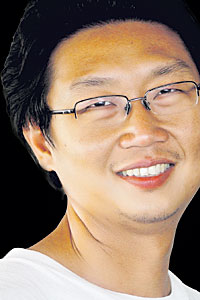Recently, the unbecoming behaviour of certain Buddhist monks has become the talk of the town. Probably the most scandalous case is the luxurious lifestyle of a famous phra, who uses brand-name products and travels like a billionaire on a private jet.
Other than that, numerous cases of Thai monks' inappropriate conduct have hit the headlines: an abbot involved in gambling; monks selling ya ba pills; monks staying at swanky beach resorts; monks collecting luxury cars... the list goes on.
If you travel the country enough, you may come across various questionable practices concerning monks.
At many scenic places, in mountainous areas as well as beachside, you will find monasteries built at superb locations just like lavish private villas.
My friend from Nakhon Ratchasima says he's seen a number of small monasteries hidden in remote corners around Khao Yai National Park. He jokingly calls them "monk resorts", as most of them are situated in scenic areas.
I gather that one reason why abbots select beautiful locations for monasteries or wats is to please donors. Monasteries in scenic locations will naturally attract more devotees looking for attractive places to practice meditation, as well as millionaires who want to make merit.
And like lay people, monks travel. Many Thai monks take a pilgrimage to practice asceticism, which involves trekking into forests, learning about modesty and practicing meditation amid the tranquility of nature. On such pilgrimages, monks prefer to spend the night in a cemetery or deep in the jungle. You might see monks walking in a line, carrying umbrellas equipped with mosquito nets inside as well as other utensils in big brown bags.
It is amazing to learn that these monks on pilgrimages can trek very deep into the jungle. A wildlife photographer once told me that no matter how deep he goes into the jungle, he always meets monks on a pilgrimage.
But sometimes the monks go too deep into the jungle, until they are too exhausted to walk back, and it becomes the park rangers' burden to provide transportation for the pilgrims.
Helping monks is a kind of merit-making. However, the problem is that it happens quite often and affects the park rangers' work schedule.
Even monks in town sometimes come up with new and unlikely ideas. We've heard a lot about how many temples want to build huge statues to set new records, and so we see adverts about the tallest Buddha image in this province, or the highest joss stick in another province, and so on.
Though most Buddhist temples in Thailand belong to the Theravada branch, we sometimes find statues from other sects mixed up in temple compounds. The most commonly found ones are statues of Guan Yin, the Bodhisattva from Mahayana Buddhism. My guess is that marketing-minded abbots may want to ride the trend of Guan Yin's popularity in Thailand and hope statues of her will attract more Chinese Buddhists to make donations.
When the Jatukham Ramathep talisman was very popular years ago, many temples saw an opportunity to make serious money from the trend.
Some temples made Jatukham amulets for sale while others provided venues and facilities for amulet-making ceremonies. Many senior monks were invited to participate in amulet-blessing ceremonies.
A famous temple in Nakhon Si Thammarat even charged 100,000 baht to provide a venue and facilities for each amulet-blessing ceremony.
When the talisman's popularity reached its peak, two ceremonies were held a day and the temple's venues were fully booked for months. The talisman is connected in the popular imagination to the great stupa of Nakhon Si Thammarat.
However, he is just a deity who guards the stupa and protects Buddhism.
Now, the latest trend is worshipping Ganesh. I just hope Thai monks will not get involved with this Hindu deity and turn it into another marketing campaign.
The modern world is tempting and distracting, and monks often fail to remember that they are one of the pillars of the religion.
If monks fail to behave properly, they should leave the monkhood and live as ordinary people. That would be best for everyone.
Peerawat Jariyasombat is a travel writer for the Life section of the Bangkok Post.
